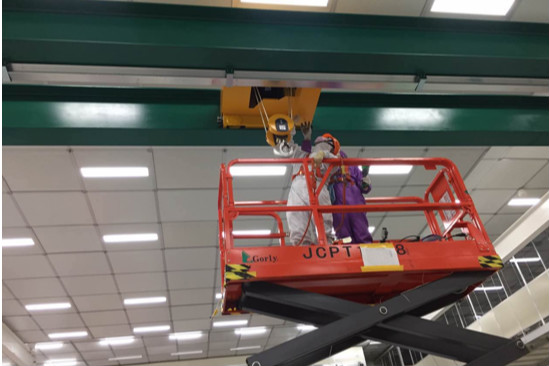How to do crane no-load, static load, and dynamic load tests
Before the crane is officially put into use, a load test must be carried out to determine the good performance of the various components of the crane. The purpose of the test is to check the correctness of the electrical equipment, the strength and rigidity of each part of the structure, and the operation of the part. The editor of our factory will introduce to you how to do the crane no-load, static load, and dynamic load tests.

1. Crane No-load test
- 1.1 The purpose of the experiment is to check the reliability of the operation of each mechanism of the bridge crane, the reliability of the electrical equipment and the correctness of the wiring. Adjust all safety protection devices.
- 1.2 Content
- 1.2.1 Check whether each brake action is correct, the braking effect should be good, and the brake shoe gap should be adjusted. 1.2.2 According to the power supply, check whether the electrical components are in good condition, correct, and whether there is any leakage.
- 1.2.3 Hoisting mechanism test, turn the controller handle to make the hook rise and fall, if there is no abnormality, it can be accelerated step by step, and repeated the number of lifting and lowering, check whether the gearbox, drum, brake work normally, and whether the speed regulation characteristics are consistent. principle.
- 1.2.4 Operate the trolley running mechanism, run repeatedly at various speeds forward and backward several times to check that the trolley running mechanism should be good and five abnormalities, and the trolley stopper is accurate and flexible and reliable.
- 1.2.5 Trolley traveling mechanism: Operate the trolley traveling mechanism controller to walk twice on the full track of the track, check whether the traveling wheels rotate smoothly and synchronously, whether the operation is flexible, and whether the action is accurate when colliding with the terminal switches at both ends.
- 1.2.6 Joint action test, operate the three mechanisms of the crane, the dolly, and the dolly lifting mechanism at the same time, and check whether the actions of each mechanism meet the requirements.
2. Crane Static load test
- 2.1 Purpose: To check the structure, strength, rigidity, working performance and reliability of the brake of each part of the crane.
- 2.2 Content
- 2.2.1 The static load test can only be carried out after the no-load test confirms that each mechanism works normally and meets the requirements.
- 2.2.2 Crane overload and test, the weight should be 1.25 times of the rated load.
- 2.2.3 Static load test method
- Start with 25% of the rated load, and then use 50%, 75%, 100%, 110% to gradually increase the load to 125%. Do not land by itself at noon. During the overload test, drive the trolley into the main girder and measure the deflection of the main girder with a level to not be less than 1/700 of the span of the main girder. After unloading, drive the trolley to the end, and then measure the elastic deformation value of the main girder. , The main beam must not be plastically deformed.
3. Crane Dynamic load test
- 3.1 Purpose: To check the operation of each part of the crane, and make meticulous and necessary adjustments to each mechanism, so that each mechanism meets the technical requirements.
- 3.2 Experimental conditions
- 3.2.1 The dynamic load test shall be carried out after the static load test is qualified
- 3.2.2 Within the allowable range of conditions, with 110% of the rated load. Carry on the big and small car walking. Various tests of lifting mechanism.
- 3.3 Test method
- 3.3.1 The lifting mechanism is repeatedly lifted and lowered 3 times, check the working condition of the brake, and test the limit device
- 3.3.2 The trolley travel mechanism reciprocates twice to check the working conditions of each part of the trolley, and the accuracy and reliability of the travel limit of the trolley
- 3.3.3 The traveling mechanism of the trolley walks in the whole range of the track to check the operation of each part of the traveling mechanism, the accuracy and reliability of the limit switch
- 3.3.4 Carry out 10-15 minutes joint action test and brake test under the 110% load condition of the crane. Check the working conditions of each part of the crane before and after the test. At the end of the test, all the problems found by each institution during the test were treated symptomatically and recorded and archived.
Cranes over 3 tons must be reported for inspection and filing before being put into use, and crane users must not be sloppy.
